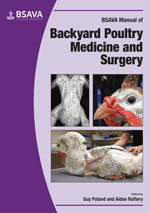
Full text loading...

Replete with annotations demonstrating normal anatomy, this chapter provides a comprehensive overview of poultry and waterfowl anatomy and physiology. Covers the following topics: external features and integument, musculoskeletal system, body cavities, cardiovascular system, respiratory system, gastrointestinal system, urinary system, reproductive system, immune system, nervous system and sensory organs.
Anatomy and physiology, Page 1 of 1
< Previous page | Next page > /docserver/preview/fulltext/10.22233/9781910443194/9781910443194.2-1.gif

Full text loading...






















